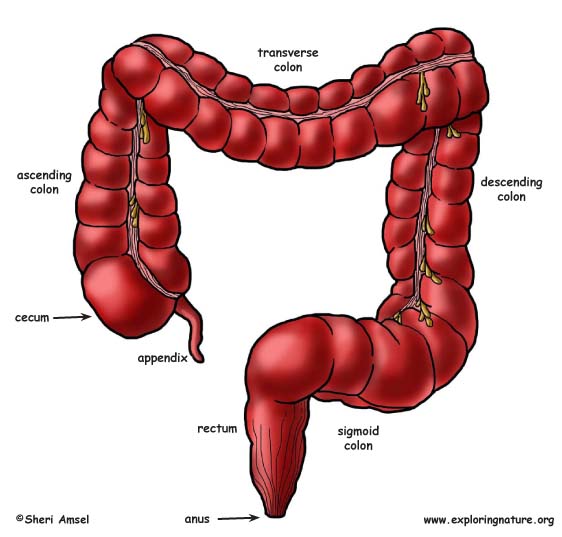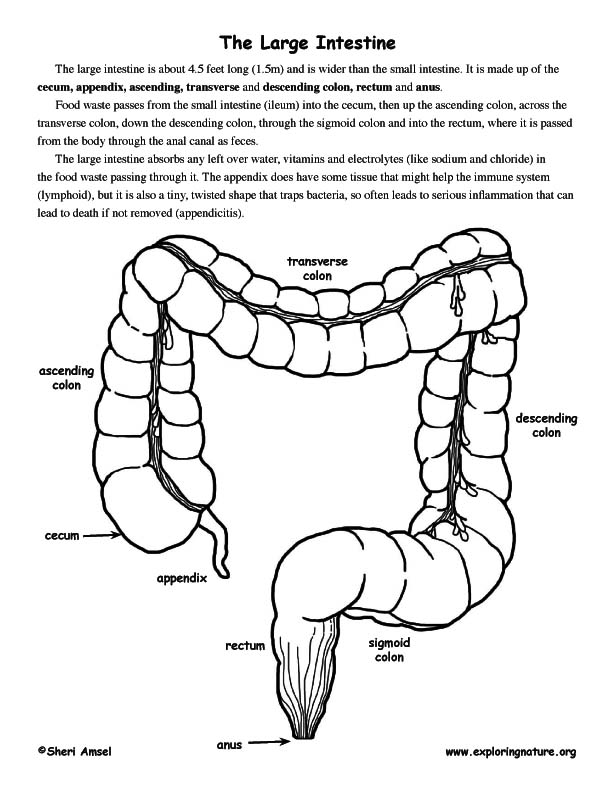

The large intestine is about 4.5 feet long (1.5m) and is wider than the small intestine. It is made up of the cecum, appendix, ascending, transverse and descending colon, rectum and anal canal.
Food waste passes from the small intestine (ileum) into the cecum, then up the ascending colon, across the transverse colon, down the descending colon, through the sigmoid colon and into the rectum, where it is passed from the body through the anal canal.
The large intestine absorbs any left over water, vitamins and electrolytes (like sodium and chloride) in the food waste passing through it. The appendix does have some tissue that might help the immune system (lymphoid), but it is also a tiny, twisted shape that traps bacteria, so often leads to serious inflammation that can lead to death if not removed (appendicitis).
LS1.A Structure and Function
K-2 All organisms have external parts that they use to perform daily functions.
3-5 Organisms have both internal and external macroscopic structures that allow for growth, survival, behavior, and reproduction.
6-8 All living things are made up of cells. In organisms, cells work together to form
tissues and organs that are specialized for particular body functions.
9-12 Systems of specialized cells within organisms help perform essential functions of life. Any one system in an organism is made up of numerous parts. Feedback mechanisms maintain an organism’s internal conditions within certain limits and mediate behaviors.
When you research information you must cite the reference. Citing for websites is different from citing from books, magazines and periodicals. The style of citing shown here is from the MLA Style Citations (Modern Language Association).
When citing a WEBSITE the general format is as follows.
Author Last Name, First Name(s). "Title: Subtitle of Part of Web Page, if appropriate." Title: Subtitle: Section of Page if appropriate. Sponsoring/Publishing Agency, If Given. Additional significant descriptive information. Date of Electronic Publication or other Date, such as Last Updated. Day Month Year of access < URL >.
Amsel, Sheri. "Large Intestine (Colon)" Exploring Nature Educational Resource ©2005-2024. December 17, 2024
< http://www.exploringnature.org/db/view/1047 >

